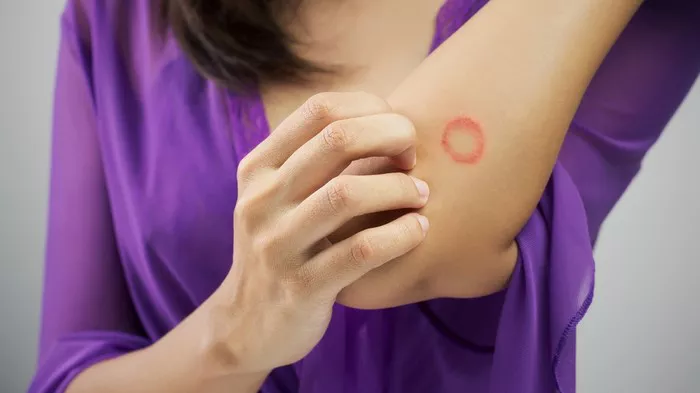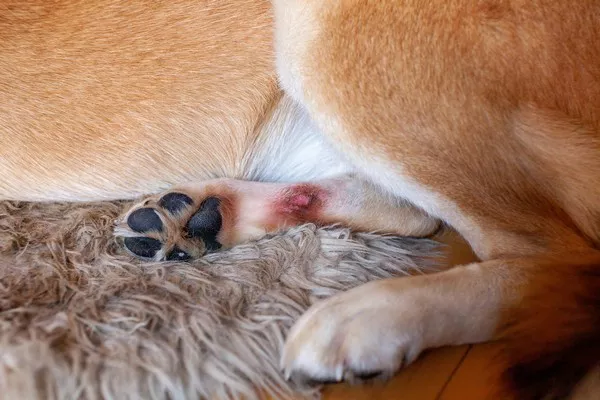Ringworm is a common fungal infection that affects the skin, scalp, and nails. Despite its name, ringworm has nothing to do with worms. It’s called “ringworm” because it often forms a circular rash that looks like a ring. This article explains in detail what fungus causes ringworm, how it spreads, its symptoms, and how it can be treated.
What is Ringworm?
Ringworm, also known as tinea, is a skin infection caused by fungi that live on the surface of the skin. The medical term “tinea” is followed by a part of the body it affects, such as tinea corporis (body), tinea capitis (scalp), or tinea pedis (athlete’s foot). The fungus responsible for these infections thrives in warm, moist environments and can easily spread from person to person.
Although it may appear as a small, circular rash, the infection can spread to larger areas of the skin if left untreated. Ringworm can affect anyone, regardless of age or health status.
The Fungus Behind Ringworm: Dermatophytes
The fungus responsible for ringworm is part of a group of fungi called dermatophytes. Dermatophytes are fungi that thrive on keratin, a protein found in the skin, hair, and nails. There are three main types of dermatophytes that cause ringworm:
Trichophyton: This is the most common type of dermatophyte that causes ringworm. It can affect the skin, hair, and nails. Trichophyton rubrum and Trichophyton mentagrophytes are the most well-known species that cause the infection.
Microsporum: Microsporum species are another common cause of ringworm, especially on the scalp. Microsporum canis is often responsible for infections in humans, particularly those who have contact with animals like cats and dogs.
Epidermophyton: This species mainly affects the skin and nails and is most commonly found in areas of the body that are warm and moist, like the feet and groin.
These fungi live on dead skin cells and can thrive in places like public showers, locker rooms, and gyms, where moisture levels are high.
How Does Ringworm Spread?
Ringworm is highly contagious and can spread through various ways, including:
Direct Contact: The most common way to get ringworm is by direct contact with an infected person or animal. If you touch someone’s skin that has the infection, you can easily contract the fungus.
Indirect Contact: Fungi spores can survive on objects for several days. If you touch contaminated surfaces like towels, clothes, or bed linens, you could contract ringworm.
Animal Contact: Ringworm is common in pets, especially cats and dogs. Humans can catch the infection by touching an infected animal or its bedding. Animal-to-human transmission is a significant source of the infection.
Sharing Personal Items: Sharing personal items like combs, brushes, and clothing can also lead to transmission of the infection.
Environmental Factors: Dermatophytes thrive in warm, humid environments. Places like locker rooms, swimming pools, and public showers are common areas where the fungi spread.
Symptoms of Ringworm
The symptoms of ringworm depend on where the infection occurs. However, there are several key signs to look out for:
Itchy Skin: The most common symptom of ringworm is itching. The infection can cause severe itching and discomfort, which can worsen as the fungus spreads.
Circular Rash: Ringworm often presents as a red, scaly, and circular rash. It may have raised edges and clear skin in the center, giving it a ring-like appearance.
Bald Patches (for scalp infections): When ringworm infects the scalp (tinea capitis), it can cause hair loss and bald patches. The skin may become flaky or scaly, and you might notice small, pimple-like bumps.
Cracking and Peeling (for athlete’s foot): When ringworm affects the feet (tinea pedis), it can cause cracked, peeling skin between the toes, particularly in the webbing.
Blisters: In some cases, ringworm can cause blisters filled with fluid. These blisters may break open and ooze, leading to a crusty appearance.
Thickened or Discolored Nails (for nail infections): When ringworm affects the nails (tinea unguium), the nails may become thickened, brittle, and discolored. They may also separate from the nail bed.
Skin Redness and Inflammation: In some cases, the affected area may become inflamed, red, and swollen, making the skin appear irritated and painful.
Risk Factors for Ringworm
Certain factors can make you more likely to get ringworm:
Close Contact with Infected Individuals or Animals: People who live in crowded environments or those who have close contact with pets are at greater risk of getting ringworm.
Poor Hygiene: Not bathing regularly or not washing clothes and towels frequently can increase the risk of getting ringworm.
Weakened Immune System: People with compromised immune systems, such as those with HIV/AIDS or those on immune-suppressing medications, are more prone to fungal infections.
Sweating: Excessive sweating, particularly in areas like the feet or groin, creates a perfect environment for fungi to grow.
Tight Clothing: Wearing tight clothing or shoes can trap moisture, making it easier for the fungus to thrive on the skin.
Diagnosing Ringworm
If you suspect you have ringworm, it’s important to visit a healthcare provider. A doctor can usually diagnose the condition based on the appearance of the rash and the symptoms. In some cases, they may take a skin scraping or sample from the affected area and examine it under a microscope to confirm the presence of fungi.
Sometimes, your doctor may perform a Wood’s lamp test, which uses ultraviolet (UV) light to examine the skin. Certain fungi will glow under the light, helping to identify the infection.
Treating Ringworm
Ringworm is treatable with antifungal medications. The treatment will depend on the location and severity of the infection.
Topical Antifungal Creams: For most cases of ringworm, over-the-counter antifungal creams, lotions, or powders can be effective. These include clotrimazole, miconazole, and terbinafine. Apply the cream to the affected area as directed, usually for at least two weeks, even if the rash appears to go away.
Oral Antifungal Medications: In more severe cases or when the infection affects the scalp or nails, doctors may prescribe oral antifungal medications. Common oral medications include terbinafine, itraconazole, or fluconazole.
Medicated Shampoos: For scalp infections (tinea capitis), doctors may recommend antifungal shampoos along with oral medications to prevent the fungus from spreading.
Home Remedies: While medical treatments are usually the most effective, some home remedies may help soothe the skin. Tea tree oil, garlic, and coconut oil have antifungal properties and may help manage mild infections. However, they should not replace medical treatment.
Preventing Ringworm
To reduce the risk of contracting or spreading ringworm, follow these preventive tips:
Keep Your Skin Clean and Dry: Wash your skin regularly, especially in areas that sweat a lot, like your feet and groin. Dry your skin thoroughly after bathing.
Avoid Sharing Personal Items: Never share towels, combs, brushes, or clothing with others. Always wash items after use.
Wear Breathable Clothing: Choose loose-fitting, moisture-wicking clothing that allows your skin to breathe. This is especially important for preventing infections in warm and humid areas of the body.
Disinfect Shared Spaces: Clean common areas, like gym floors or locker rooms, with antifungal cleaning products. Wear sandals or shower shoes in public showers.
Treat Pets for Fungal Infections: If you have pets, check them regularly for signs of ringworm, especially if they have patches of hair loss or scaly skin. Consult your vet if you suspect your pet has ringworm.
Treat Infected Areas Promptly: If you notice the early signs of ringworm, treat it right away to prevent it from spreading to other parts of your body or to others.
Conclusion
Ringworm is a common and treatable fungal infection caused by dermatophytes. It spreads through direct and indirect contact with infected people, animals, or contaminated surfaces. While the infection is typically not serious, it can be uncomfortable and easily spread if not treated. With proper treatment, including antifungal creams or oral medications, most cases of ringworm clear up within a few weeks. By practicing good hygiene and taking preventive measures, you can reduce your risk of getting ringworm and other fungal infections.
Related topics:
























